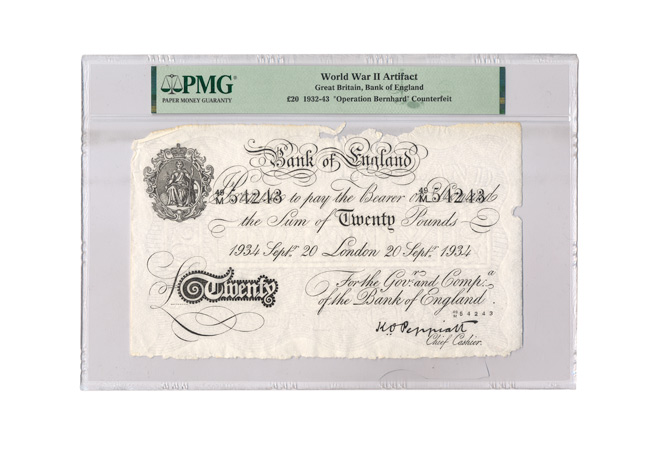Sell Outs
The never-before-seen set of Branch Mint Sovereigns
Branch Mint Sovereigns are a captivating chapter in the world of numismatics, offering an enchanting glimpse into the rich history of gold coinage and the economic influence that spread across the British Empire and beyond. These coins, minted in locations outside the primary mint (the Royal Mint in London), played pivotal roles in the economies of their respective regions.
This blog will take you on a journey through the history, significance, and key dates of Branch Mint Sovereigns, including those from Australia, Canada, South Africa, and India.
>>> Click here to secure your Never-Before-Seen British Empire Sovereign Collection <<<

To distinguish between each of the many Royal Mint locations across the British Empire, gold Sovereigns were for many years marked with a letter symbolising the city or country of their origin. Most gold Sovereign coins were produced in London such as The London Mintmark Sovereign, struck at Tower Hill, and since the 1970s in Llantrisant, South Wales. These coins are unmarked, but many had a small mark above the year of production to indicate their origin.
The concept of Branch Mint Sovereigns emerged in response to the British Empire’s expansive reach and the need for a stable and uniform currency across its vast territories. The Royal Mint, unable to meet the burgeoning global demand for sovereigns, established branch mints in various colonies. These mints not only facilitated local transactions but also promoted economic stability and integration within the Empire.
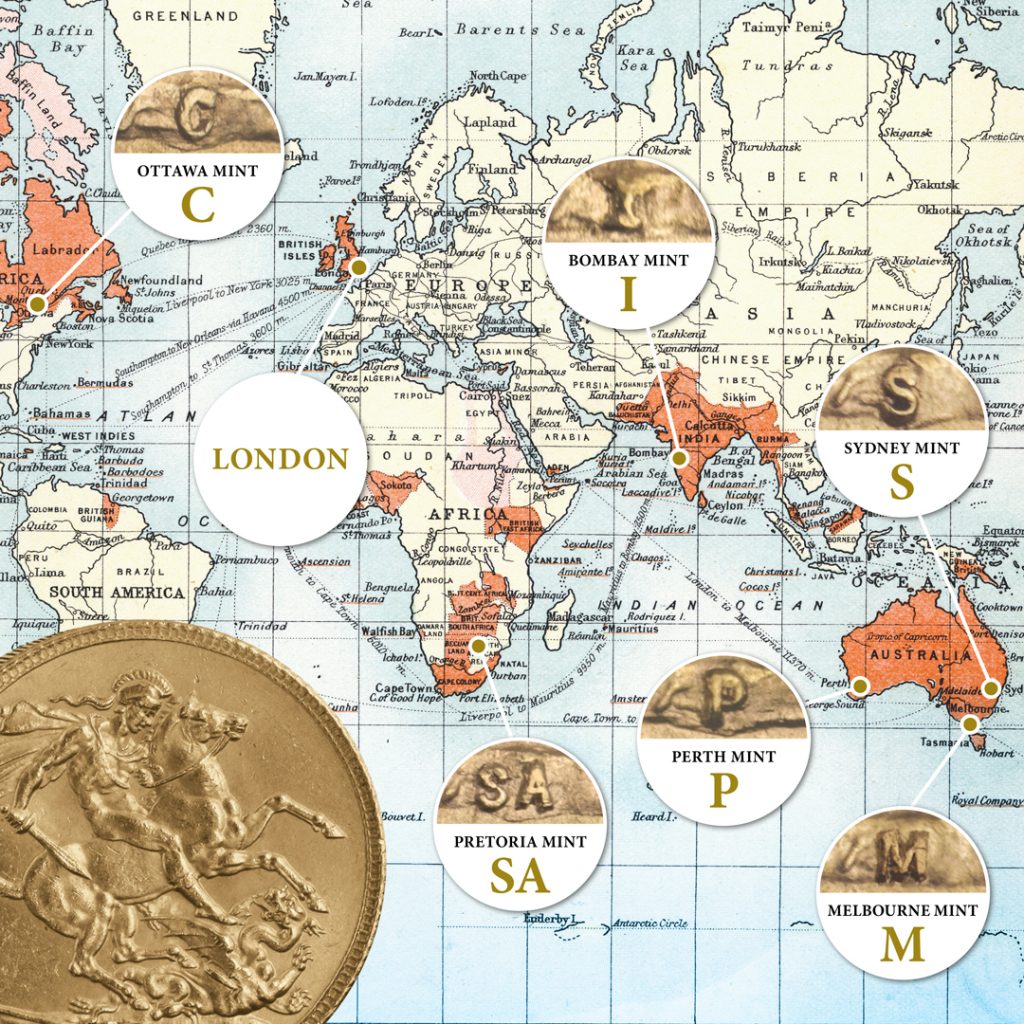
Australian Branch Mints
Australia became a focal point for branch mint sovereigns due to its rich gold deposits discovered during the 19th century. Three main mints operated in Australia:
- Sydney Mint (1855-1926): The first Australian branch mint, it produced sovereigns featuring a unique design with “Sydney Mint” on the reverse until 1870, after which it adopted the standard St. George and the Dragon reverse. These early coins are treasures of history, each telling a story of Australia’s gold rush era. Sovereigns produced in Sydney featured the “S” mintmark.
- Melbourne Mint (1872-1931): Known for its production consistency, the Melbourne Mint produced sovereigns with the “M” mintmark. These coins are prized by collectors for their exquisite craftsmanship and historical significance.
- Perth Mint (1899-1931): The Perth Mint also produced sovereigns marked with a “P”. Its coins stand out for their quality and the rich history of Western Australia’s gold mining legacy.
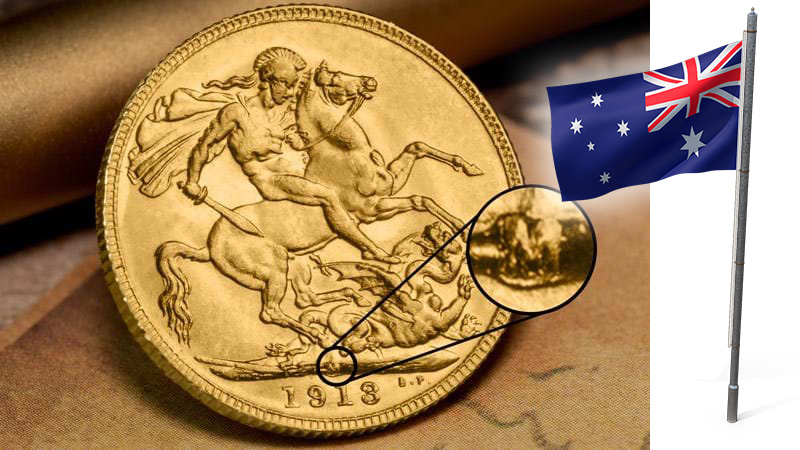
Canadian Branch Mint
The Ottawa Mint, now the Royal Canadian Mint, was established in 1908. Canadian sovereigns, produced between 1908 and 1931, are distinguished by their “O” mintmark. These coins are a testament to Canada’s important role in the British Empire, especially during the First World War. Each sovereign from this era carries with it the story of a nation coming into its own on the global stage.
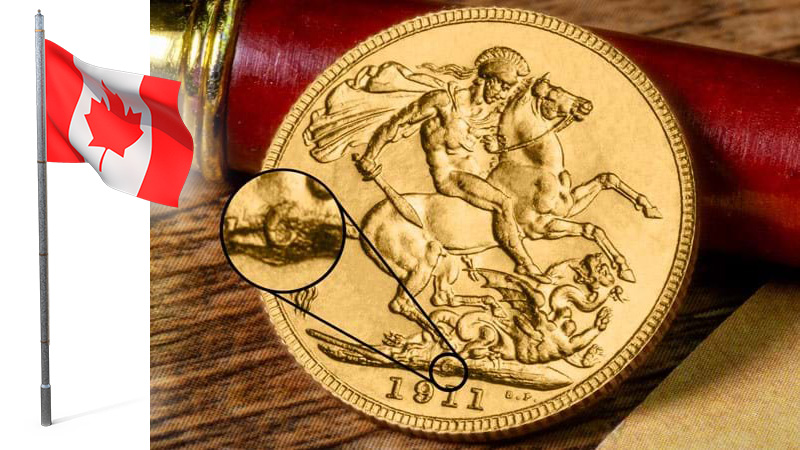
South African Branch Mint
The Pretoria Mint began producing sovereigns in 1923, bearing the “SA” mintmark. These coins are significant due to South Africa’s prominent role in gold production. Sovereigns from the Pretoria Mint circulated widely, symbolizing the region’s economic might and the depth of its natural resources.
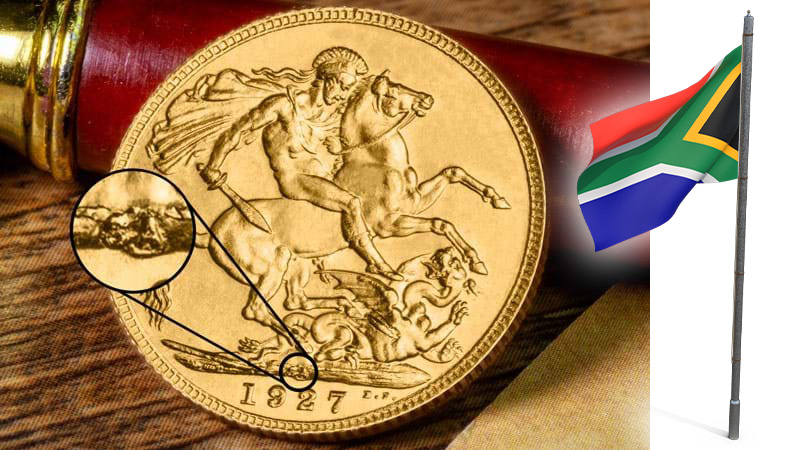
Indian Branch Mint
The Bombay Mint produced sovereigns for a brief period from 1918 to 1919. These coins, marked with an “I” mintmark, are rare and hold a special place in the history of British India. They were minted to address the wartime demand for gold coinage and reflect India’s pivotal role in the British economy. Each coin is a rare gem, representing a fleeting yet crucial moment in history.
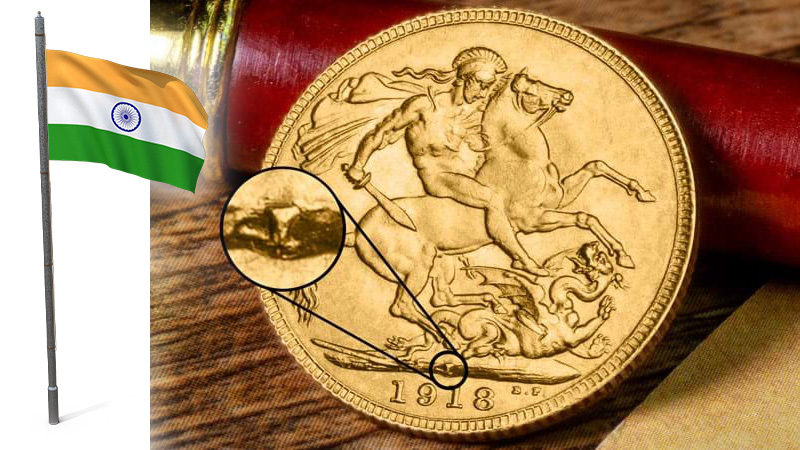
Branch Mint Sovereigns offer a fascinating glimpse into history, connecting the economic dots of the British Empire. From the goldfields of Australia to the financial hubs of Canada, South Africa, and India, these coins represent not just currency but also the economic and cultural exchanges of their time. Collectors and historians alike value these coins for their beauty, rarity, and the stories they tell about an era of global trade and imperial reach.
Dive into the world of Branch Mint Sovereigns with the Complete set of SEVEN ‘Mintmark’ Sovereigns, and let each coin take you on a journey through history. Each Sovereign has been handpicked to complete a set of all seven different mintmarks and all feature the official portrait of George V on the obverse.
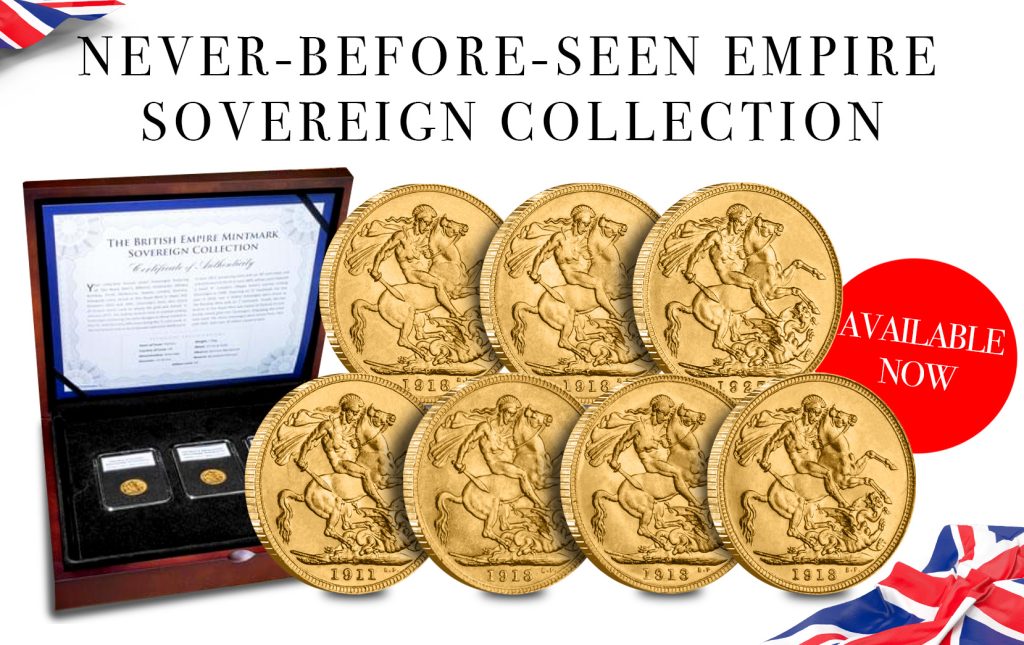
>>> Click here to secure your Never-Before-Seen British Empire Sovereign Collection <<<
BRAND NEW: UK D-Day 50p REVEALED
2024 marks 80 years since brave allied forced landed on Normandy Beaches in one of the largest military operations in history.
D-Day turned the tide in the second world war, and today, its monumental 80th anniversary is being commemorated on a brand-new UK 50p coin.
Check out the coin below and use our interactive map to discover the intricate design…
Carefully curated by sculptor and artist, David Lawrence, in collaboration with the Imperial War Museum, the coin’s reverse design is the perfect tribute to time that will soon move beyond living memory.
In fact, it is likely one of the last anniversaries where veterans and their families can still honour an incredible moment in British history.
The landings themselves took place at five assault beaches along a 50 mile stretch of the Normandy Coast. They were given the codenames of Utah, Omaha, Gold, Juno and Sword – all of which are inscribed on the bottom of the design.
The coin is available in a range of specifications, including superior Brilliant Uncirculated and limited-edition Silver Proof and Piedfort.
However, some of the most special issues are without a doubt the postmarked coins.
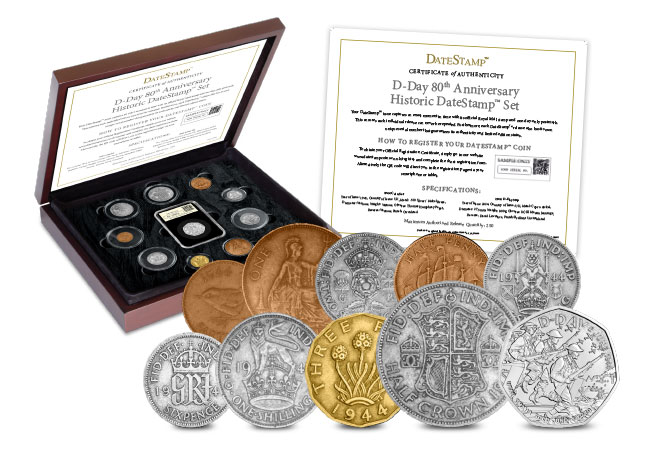
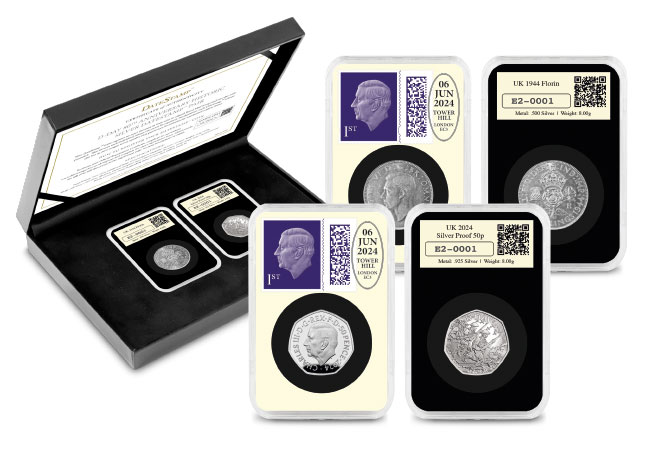
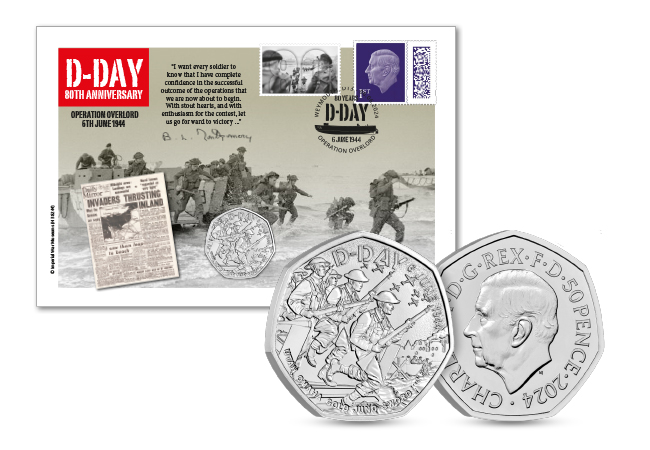
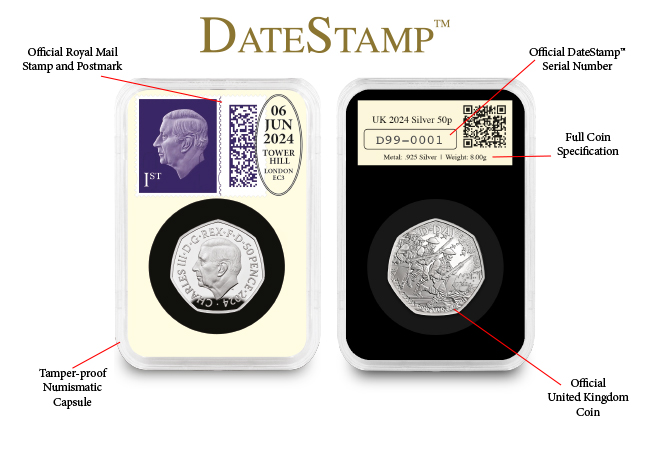
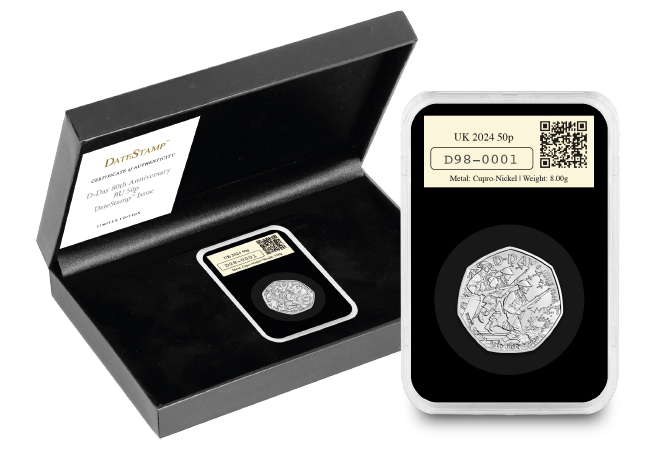
Carefully paired alongside a 1st Class Royal Mail stamp, each cover and DateStamp™ will be postmarked on the 80th Anniversary date, 6th June 2024, and are available for pre-order today.
The Operation Bernhard Banknote – is this the most unique piece of WWII history?
Operation Bernhard was the largest counterfeiting operation in history. It was a secret Nazi plot to destabilise the British economy, in which the Germans planned to flood Europe with counterfeit notes to cause artificial inflation of the British pound.
Unsurprisingly Operation Bernhard, as it was known, is remembered as one of wartime’s most over-the-top secret plots.
Please read on to learn more about this remarkable story, and how you can be one of the few collectors to secure this surviving piece of wartime history.
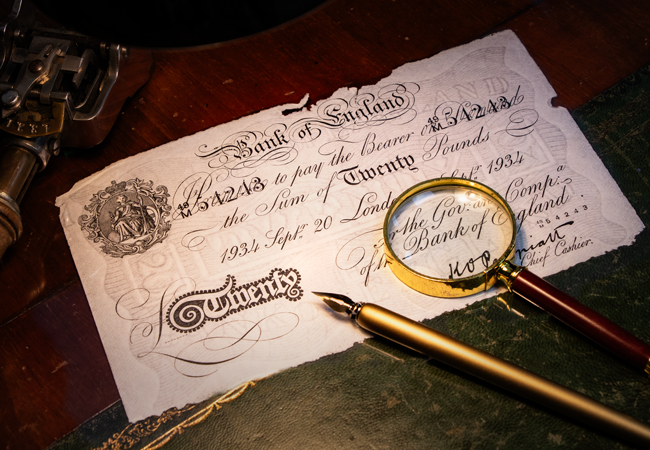
The Operation
In 1942, production of counterfeit British ‘White Fivers’ began behind the gates of Sachsenhausen concentration camp. Prisoners worked to perfect the process, and by 1945 it is estimated that 70,000,000 notes were printed by inmates.
But as WWII drew closer to its end and the Nazis reached the closing months of the operation, they became concerned that their fakes notes would be exposed during trials for the war crime of counterfeiting.
In an attempt to hide the evidence, the completed notes and printing equipment were sent to Austria where they were sunk into the deepest part of Lake Toplitz.
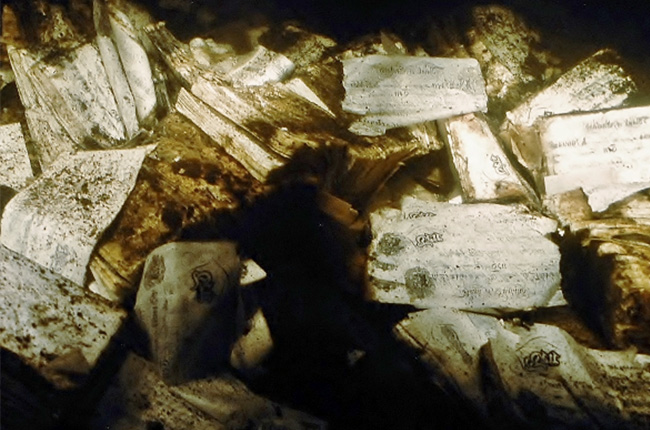
The Recovery
In 1959, the German newsmagazine “Der Stern” financed a recovery operation to retrieve the surviving banknotes. But due to the depth of the lake, only marginal quantities were recovered.
Now, 75 years after the operation began – the notes are again in the light of day.
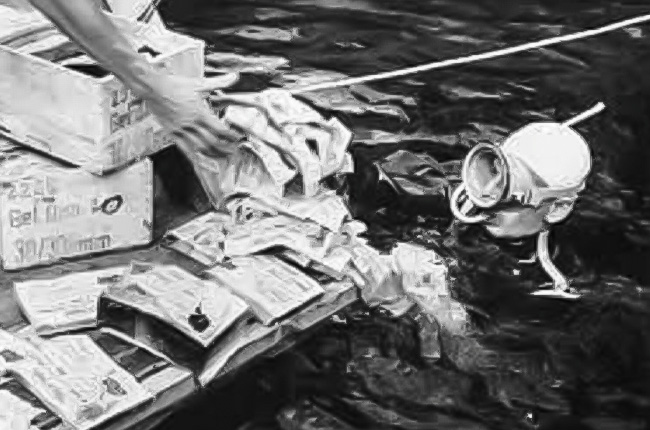
Your chance to secure one for a deposit of £34.50 (+p&p)
There are few WWII stories as remarkable as the one of Operation Berhnard.
And in this once-in-a-lifetime Westminster first, we are offering just 50 collectors the chance to own a genuine ‘Paper Money Guarantee’ (PMG) certified ‘Operation Bernhard’ banknote recovered from the depths of Lake Toplitz.
The last time we had 50 available, they sold-out in hours.
Don’t miss out! Click here to secure your Operation Bernhard banknote >>
